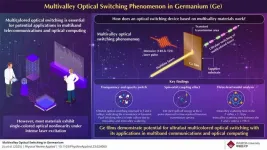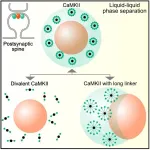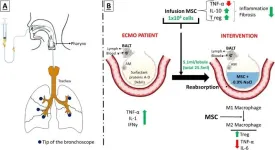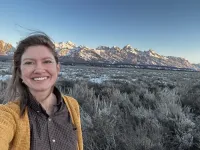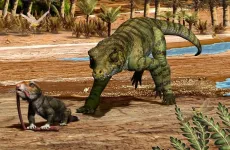Opaque materials can transmit light when excited by a high-intensity laser beam. This process, known as optical bleaching, induces a nonlinear effect that temporarily alters the properties of a material. Remarkably, when the laser is switched on and off at ultrahigh speeds, the effect can be dynamically controlled, opening new possibilities for advanced optical technologies.
Multicolored optical switching is an important phenomenon with potential applications in fields such as telecommunications and optical computing. However, most materials typically exhibit single-color optical nonlinearity under intense laser illumination, limiting their use in systems requiring multicolor or multiband switching capabilities. Currently, most optical switches are based on microelectromechanical systems, which require an electric voltage or current to operate, resulting in slow response times.
To address this gap, a group of researchers, led by Professor Junjun Jia from the Faculty of Science and Engineering at Waseda University, Japan, in collaboration with Professor Hui Ye and Dr. Hossam A. Almossalami from the College of Optical Science and Engineering at Zhejiang University, China, Professor Naoomi Yamada from the Department of Applied Chemistry at Chubu University, Japan, and Dr. Takashi Yagi from the National Institute of Advanced Industrial Science and Technology, Japan, investigated the multivalley optical switching phenomenon in germanium (Ge) films. They focused on how intense laser irradiation induces ultrafast optical switching across multiple wavelengths in Ge, a multivalley semiconductor. Their study demonstrated efficient multicolored optical switching using a single-color pulse laser, potentially overcoming the limitations of traditional single-color optical nonlinearities. Their research was published in Physical Review Applied on February 24, 2025.
By irradiating Ge with an intense pulse laser, the team achieved ultrafast switching between transparency and opacity across a wide wavelength range. Femtosecond time-resolved transient transmission measurements revealed ultrafast optical switching in both the Γ and L valleys, due to the existence of intravalley and intervalley scattering. "Our results confirm that intense laser irradiation in Ge films allows for ultrafast optical switching across multiple wavelengths, offering the possibility of controlling a material’s transparency and opening new doors for possible applications in optical communications, optical computing, and beyond,” explains Prof. Jia.
Such multivalley optical switching is found to strongly depend on the band structure of Ge. Experimental measurements suggest that the transient signal is highly dependent on the specific region of the band structure involved. For example, the transient transmission spectra reveal a split-off energy of 240 meV at the L high symmetric point. “Careful selection of probing energies, based on the band dispersion calculated with the HSE06 functional and spin-orbit coupling effects, allowed us to accurately capture the transient electronic occupation in both the Γ and L valleys,” says Prof. Jia. This allows the extraction of intervalley and intravalley scattering times in multivalley materials from transient measurements.
Overall, this study highlights the significant potential of Ge as a key material for advanced optical switching, with promising applications in high-speed data transmission and computing. By enabling control over transparency at multiple wavelengths using a single-color pulse laser, exciting possibilities open up for the development of ultrafast optical switches. “This finding is expected to address the growing demand for higher data rates and security in the face of increasing internet traffic, marking a key step forward in the advancement of ultrafast optical switching devices,” concludes Prof. Jia.
***
Reference
DOI: 10.1103/PhysRevApplied.23.024060
Authors: Junjun Jia1, Hossam A. Almossalami2, Hui Ye2, Naoomi Yamada3, Takashi Yagi4
Affiliations
1Global Center for Science and Engineering (GCSE), Faculty of Science and Engineering, Waseda University, Japan
2College of Optical Science and Engineering, Zhejiang University, China
3Department of Applied Chemistry, Chubu University, Japan
4National Metrology Institute of Japan (NMIJ), National Institute of Advanced Industrial Science and Technology (AIST), Japan
About Waseda University
Located in the heart of Tokyo, Waseda University is a leading private research university that has long been dedicated to academic excellence, innovative research, and civic engagement at both the local and global levels since 1882. The University has produced many changemakers in its history, including nine prime ministers and many leaders in business, science and technology, literature, sports, and film. Waseda has strong collaborations with overseas research institutions and is committed to advancing cutting-edge research and developing leaders who can contribute to the resolution of complex, global social issues. The University has set a target of achieving a zero-carbon campus by 2032, in line with the Sustainable Development Goals (SDGs) adopted by the United Nations in 2015.
To learn more about Waseda University, visit https://www.waseda.jp/top/en
About Professor Junjun Jia
Junjun Jia is a Professor at the Faculty of Science and Engineering, Waseda University, Japan. He earned his Ph.D. from the University of Tokyo in 2021. His research focuses on the design and fabrication of functional solid-state materials, as well as the development of solid-state devices, including solid-state thermal circuital elements, acoustic wave-based devices, and nonequilibrium electronic devices. His interests include nonlinear optics, non-equilibrium physics, and excited electronic/phonon structure in solids materials. Dr. Jia has published extensively in peer-reviewed journals such as Advanced Functional Materials, Physical Review B, Physical Review Applied. He has received several awards, including the Waseda e-Teaching Award in 2022. He is a member of various committees, including the Materials Research Society of Japan.
END
